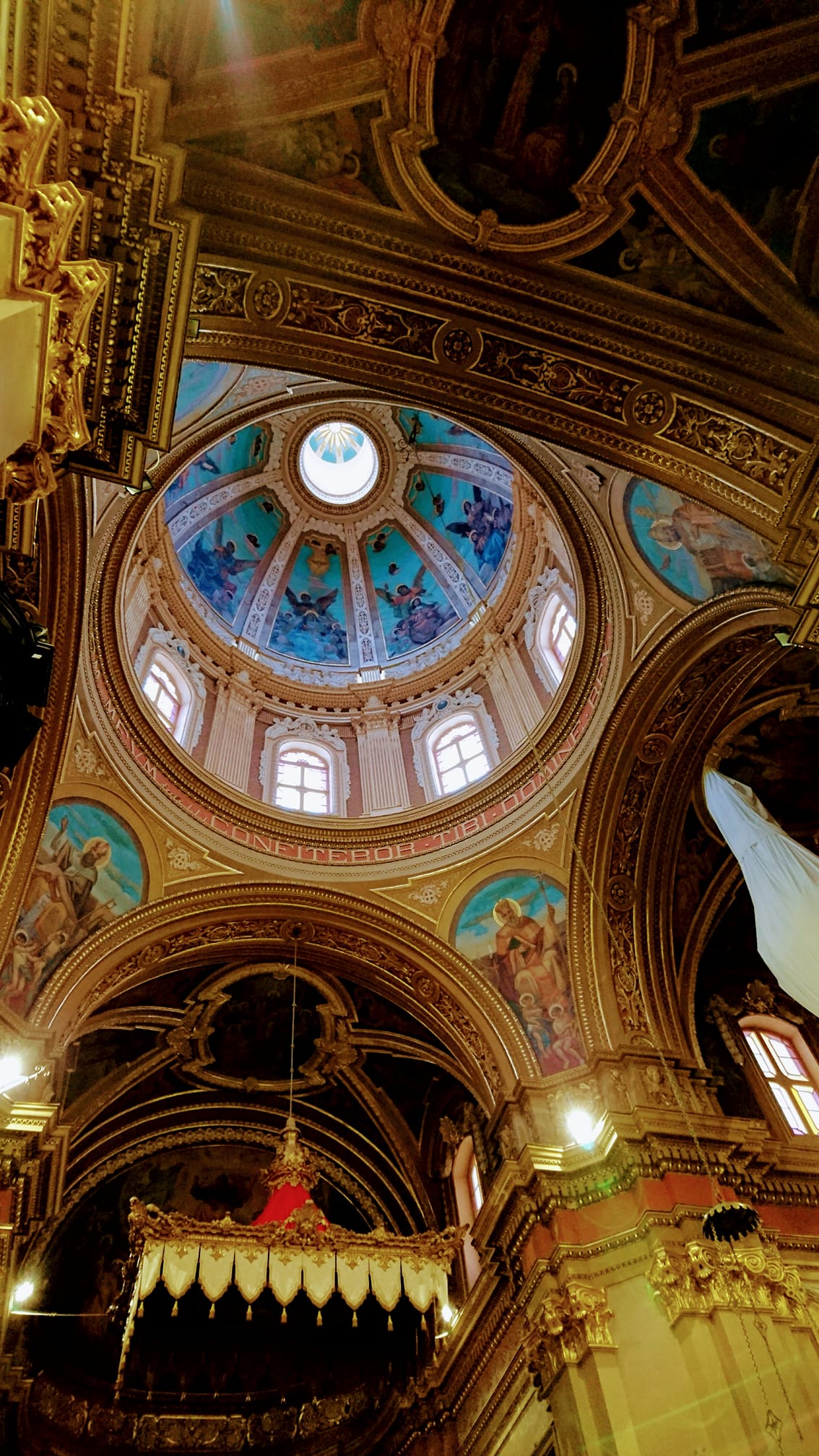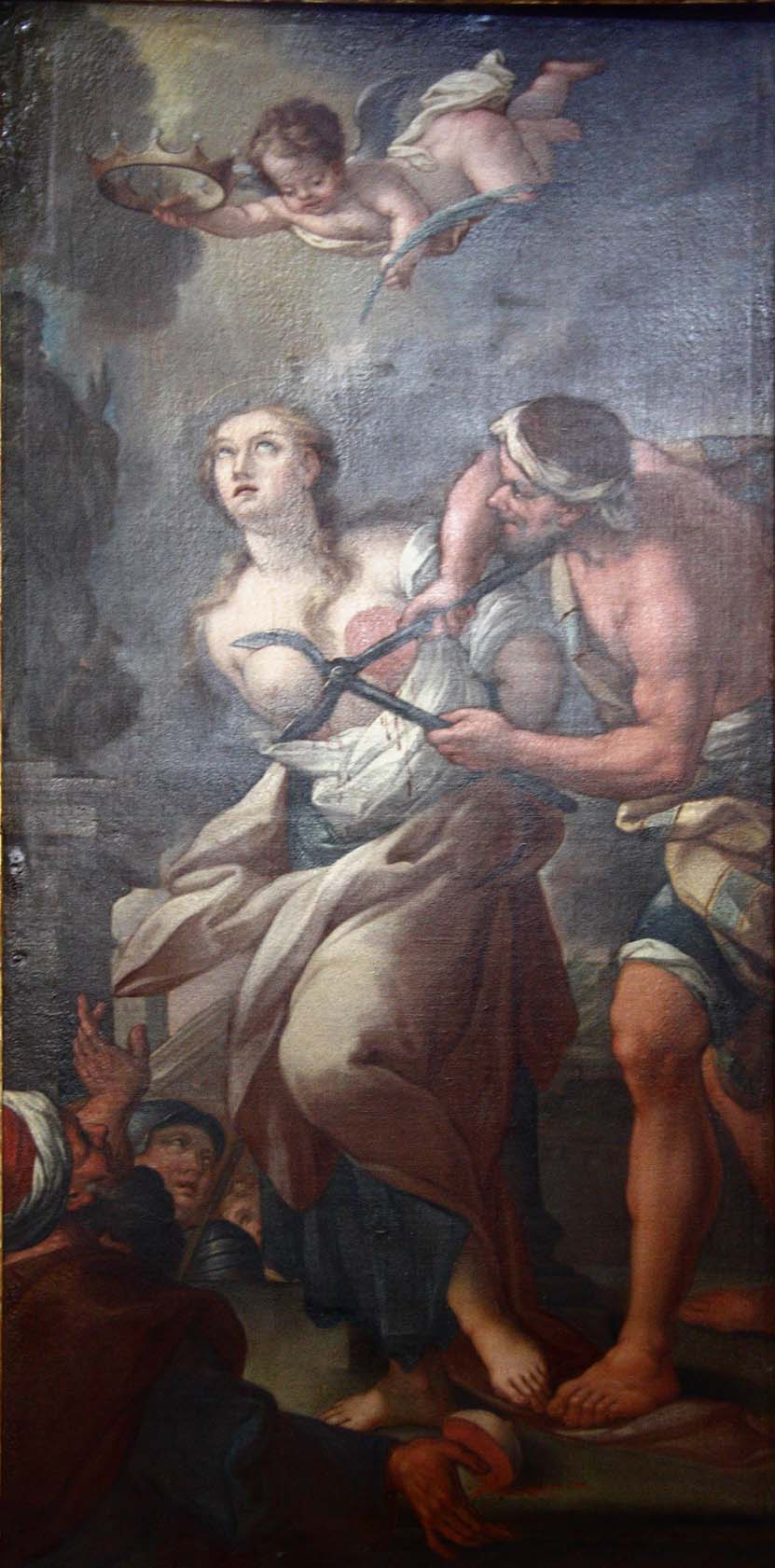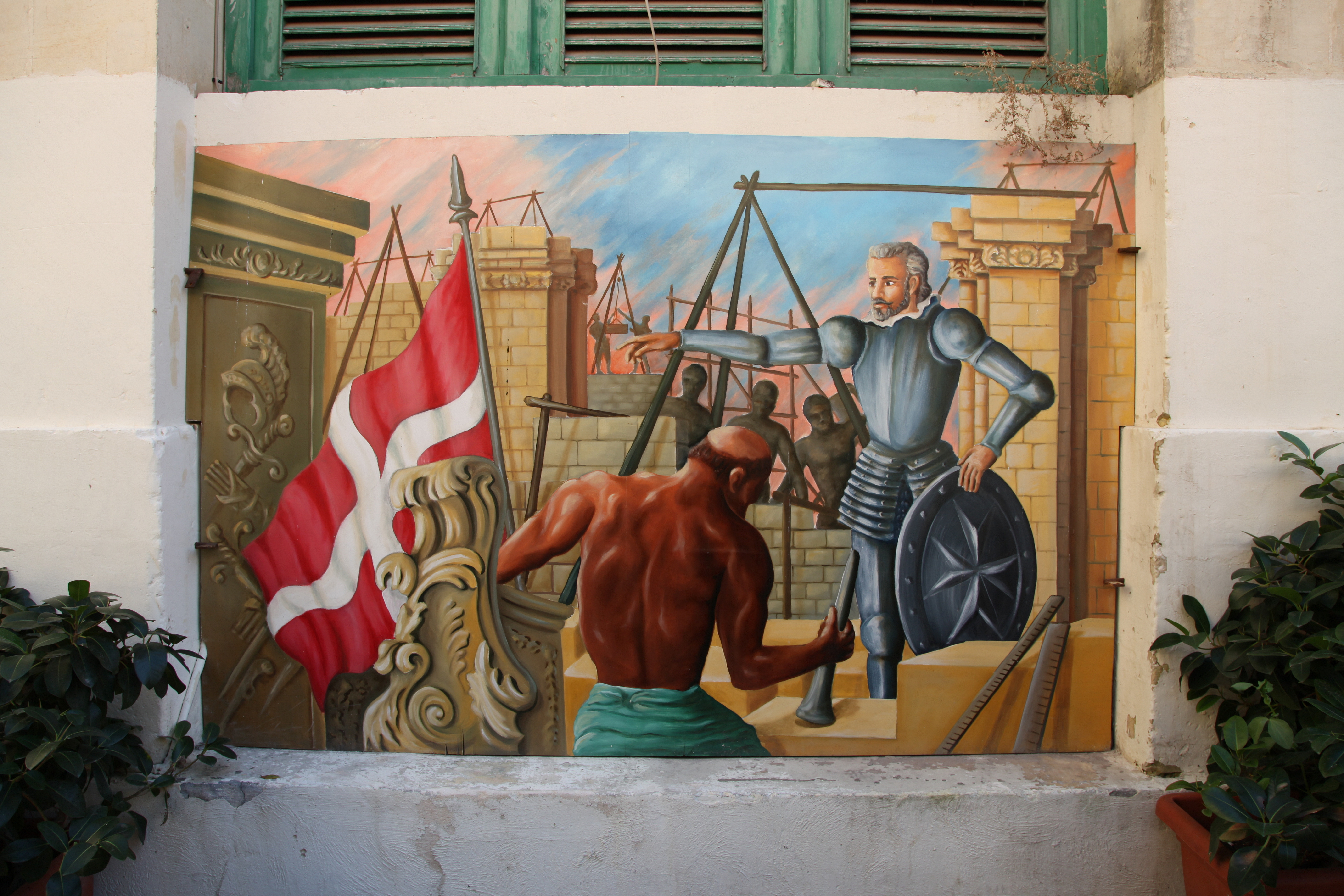|
Church Of St Catherine, Żejtun
The Church of St Catherine (), Żejtun, is a Roman Catholic church, the seat of the archpriest of Żejtun and the mother church of various parishes established from the originally larger territory of the Żejtun parish. The parish church, its oratory and an adjacent pastoral centre form a complex of Grade 1 and 2 listed buildings in the centre of town. The Church and its complex sit in front of the ''Il-Gwiedi'' quarter, commanding views from both the '' Tal-Barrani'' and ''Triq l-Aħħar Ħbit mit-Torok'' town approaches. Its dedication to Catherine of Alexandria dates back to an original church standing from this site, extant from at least the fifteenth century, and was one of the eight mother churches on Malta. The church, dating from the late 17th century, was designed in the Maltese baroque style by Lorenzo Gafà. Its construction was part of an urbanisation programme in Żejtun spearheaded by Gregorio Bonici. The church is one of the most famous and most recognisable ... [...More Info...] [...Related Items...] OR: [Wikipedia] [Google] [Baidu] |
Roman Catholic
The Catholic Church (), also known as the Roman Catholic Church, is the largest Christian church, with 1.27 to 1.41 billion baptized Catholics worldwide as of 2025. It is among the world's oldest and largest international institutions and has played a prominent role in the history and development of Western civilization. O'Collins, p. v (preface). The church consists of 24 ''sui iuris'' (autonomous) churches, including the Latin Church and 23 Eastern Catholic Churches, which comprise almost 3,500 dioceses and eparchies around the world, each overseen by one or more bishops. The pope, who is the bishop of Rome, is the chief pastor of the church. The core beliefs of Catholicism are found in the Nicene Creed. The Catholic Church teaches that it is the one, holy, catholic and apostolic church founded by Jesus Christ in his Great Commission, that its bishops are the successors of Christ's apostles, and that the pope is the successor of Saint Peter, upo ... [...More Info...] [...Related Items...] OR: [Wikipedia] [Google] [Baidu] |
Maltese Language
Maltese (, also or ) is a Semitic languages, Semitic language derived from Siculo-Arabic, late medieval Sicilian Arabic with Romance languages, Romance Stratum (linguistics), superstrata. It is the only Semitic languages, Semitic language predominantly written in the Latin script. It is spoken by the Maltese people and is the national language of Malta, and is the only languages of the European Union, official Semitic and Afroasiatic language of the European Union. According to John L. Hayes, it descended from a Maghrebi Arabic, North African dialect of Colloquial Arabic which was introduced to Malta when the Aghlabid dynasty, Aghlabids captured it in 869/870 CE. It is also said to have descended from Siculo-Arabic, which developed as a Maghrebi Arabic dialect in the Emirate of Sicily between 831 and 1091. As a result of the Norman invasion of Malta and the subsequent history of religion in Malta#Arrival of Christianity, re-Christianization of the islands, Maltese evolved indepe ... [...More Info...] [...Related Items...] OR: [Wikipedia] [Google] [Baidu] |
18th-century Roman Catholic Church Buildings In Malta
The 18th century lasted from 1 January 1701 (represented by the Roman numerals MDCCI) to 31 December 1800 (MDCCC). During the 18th century, elements of Enlightenment thinking culminated in the Atlantic Revolutions. Revolutions began to challenge the legitimacy of monarchical and aristocratic power structures. The Industrial Revolution began mid-century, leading to radical changes in human society and the environment. The European colonization of the Americas and other parts of the world intensified and associated mass migrations of people grew in size as part of the Age of Sail. During the century, slave trading expanded across the shores of the Atlantic Ocean, while declining in Russia and China. Western historians have occasionally defined the 18th century otherwise for the purposes of their work. For example, the "short" 18th century may be defined as 1715–1789, denoting the period of time between the death of Louis XIV of France and the start of the French Revolution ... [...More Info...] [...Related Items...] OR: [Wikipedia] [Google] [Baidu] |
Parish Chuch Saint Catherine Zejtun 2018
A parish is a territorial entity in many Christian denominations, constituting a division within a diocese. A parish is under the pastoral care and clerical jurisdiction of a priest, often termed a parish priest, who might be assisted by one or more curates, and who operates from a parish church. Historically, a parish often covered the same geographical area as a manor. Its association with the parish church remains paramount. By extension the term ''parish'' refers not only to the territorial entity but to the people of its community or congregation as well as to church property within it. In England this church property was technically in ownership of the parish priest ''ex officio'', vested in him on his institution to that parish. Etymology and use First attested in English in the late 13th century, the word ''parish'' comes from the Old French , in turn from , the Romanisation of the , "sojourning in a foreign land", itself from (''paroikos''), "dwelling beside, str ... [...More Info...] [...Related Items...] OR: [Wikipedia] [Google] [Baidu] |
Francesco Zahra
Francesco Vincenzo Zahra (, 15 December 1710 – 19 August 1773) was a Maltese painter who mainly painted religious works in the Neapolitan Baroque style. His works may be found in many churches around the Maltese Islands, as well as in some private collections and museums. He is considered to be the greatest painter from 18th-century Malta. Biography Zahra was born in Senglea, as the son of the stone carver Pietro Paolo Zahra and Augustina Casanova. His exact date of birth is not known, but he was baptised at the Senglea parish church on 15 December 1710. Little is known of Zahra's early life, but he likely received a good education. Zahra's career as an artist lasted for four decades, and he came to be considered as the greatest painter from Malta of the 18th century. He painted in the Baroque style and was strongly influenced from the art scene of Naples. Zahra's works include many religious paintings, including altarpieces or other large paintings for churches, vault mura ... [...More Info...] [...Related Items...] OR: [Wikipedia] [Google] [Baidu] |
Gio Nicola Buhagiar
Gio Nicola Buhagiar (, 17 May 1698 – 21 March 1752) was a Maltese painter. Biography Buhagiar was born in Żebbuġ on 17 May 1698. He was the son of the stone carver Pasquale Buhagiar, while his mother was Leonora Buttigieg, originally from Siġġiewi. The family eventually moved to Malta's capital Valletta. Buhagiar had a workshop where the fellow painter Francesco Zahra probably began his training. Buhagiar and Zahra were close friends, and the latter's early work was heavily inspired from the former, such that their style was almost indistinguishable and that some works attributed to Zahra might actually be Buhagiar's. For example, ''The Holy Family with God the Father'' at the Tarxien parish church was formerly widely attributed to both artists but is now regarded as being Buhagiar's work. He married Anna Maria Cachia on 14 February 1719, and they had three children: Maria, Eleonora and Ferdinando, with the latter becoming a priest. Buhagiar died in Valletta on 21 Marc ... [...More Info...] [...Related Items...] OR: [Wikipedia] [Google] [Baidu] |
Davide Cocco Palmieri
Davide Cocco Palmieri was an Italian, Roman Catholic prelate who served as the Bishop of Malta from 1684 until 1711. Biography Cocco Palmieri was born in Southern Italy in March 1632. He was ordained priest of the Sovereign Military Order of Malta on February 24, 1657. Two years after Bishop Molina was transferred to another diocese in Spain, Pope Innocent XI appointed Cocco Palmieri as his successor on May 15, 1684. Cocco Palmieri was greatly esteemed by Grand Master Alof de Wignacourt. He was consecrated bishop on 4 June 1684. During his bishopric Cocco Palmieri opposed the privileges that of the Roman Inquisition. He was also known for his courage to confront the knights when they were mistaken. Cocco Palmieri established a number of parishes in Gozo such as the parishes of Sannat, Nadur, Xagħra and Żebbuġ. The earthquake of 1693 resulted in the destruction of many buildings including the cathedral A cathedral is a church (building), church that contains the of a bis ... [...More Info...] [...Related Items...] OR: [Wikipedia] [Google] [Baidu] |
Mdina
Mdina ( ; ), also known by its Italian epithets ("Old City") and ("Notable City"), is a fortifications of Mdina, fortified city in the Western Region, Malta, Western Region of Malta which served as the island's former capital, from antiquity to the medieval period. The city is still confined within its walls, and has a population of 250. A natural redoubt, the area of the city has been inhabited since prehistory. A Phoenician Phoenician colonization, colony known as Ann (, ) was established around the sharing its name with the island and presumably acting as its capital. During the Punic Wars, the town was acquired by the Roman Republic, Romans and renamed Melita (ancient city), Melita (, ) after the Greek and Latin language, Latin name for the island, probably taken from the Punic port at Cospicua on the Grand Harbour. Greco-Roman Melite was larger than present-day Mdina. It was reduced to its present size during the period of Byzantine Malta, Byzantine or History of Islam ... [...More Info...] [...Related Items...] OR: [Wikipedia] [Google] [Baidu] |
Valletta
Valletta ( ; , ) is the capital city of Malta and one of its 68 Local councils of Malta, council areas. Located between the Grand Harbour to the east and Marsamxett Harbour to the west, its population as of 2021 was 5,157. As Malta’s capital city, it is a commercial centre for shopping, bars, dining, and café life. It is also the southernmost capital of Europe, and at just , it is the European Union's smallest capital city. Valletta's 16th-century buildings were constructed by the Hospitaller Malta, Knights Hospitaller. The city was named after the Frenchman Jean Parisot de Valette, who succeeded in defending the island against an Ottoman invasion during the Great Siege of Malta. The city is Baroque architecture, Baroque in character, with elements of Mannerist architecture#Mannerist architecture, Mannerist, Neoclassical architecture, Neo-Classical and Modern architecture, though the Second World War left major scars on the city, particularly the destruction of the Royal Oper ... [...More Info...] [...Related Items...] OR: [Wikipedia] [Google] [Baidu] |
Church Of St Catherine Of Italy, Valletta
Visit the website The 'Church of St Catherine of Alexandria'' (), commonly known as the Church of St Catherine of Italy (, ) is a Roman Catholic church in Valletta, Malta. It was built by the Hospitaller Langue of Italy and it serves as the parish church of the Italian community of Malta. Origins The church was built in 1576 by the Italian knights of St John to serve as their church. It was built adjacent to the Auberge d'Italie. Girolamo Cassar was commissioned to draw up the plans. In the 17th century the church was enlarged. An octagonal church was added to the existing chapel. The original chapel was changed into the sanctuary of the church. The church underwent a major restoration from 2001 till 2011. Today the church still serves as the parish church of the Italian community of Malta. The church building is listed on the National Inventory of the Cultural Property of the Maltese Islands. Works of Art The titular painting was painted by Mattia Preti. It depicts the mart ... [...More Info...] [...Related Items...] OR: [Wikipedia] [Google] [Baidu] |
Mattia Preti
Mattia Preti (24 February 1613 – 3 January 1699) was an Italian Baroque artist who worked in Italy and Malta. He was appointed a Member of the Order of Saint John. Life Born in the small town of Taverna in Calabria, Preti was called ''Il Cavalier Calabrese'' (the Calabrian Knight) after appointment as a Knight of the Order of St. John (Knights of Malta) in 1660. His early apprenticeship is said to have been with the " Caravaggist" Giovanni Battista Caracciolo, which may account for his lifelong interest in the style of Caravaggio. Probably before 1630, Preti joined his brother Gregorio (also a painter), in Rome, where he became familiar with the techniques of Caravaggio and his school as well as with the work of Guercino, Rubens, Guido Reni, and Giovanni Lanfranco. In Rome, he painted fresco cycles in the churches of Sant'Andrea della Valle and San Carlo ai Catinari. Between 1644 and 1646, he may have spent time in Venice, but remained based in Rome until 1653, retur ... [...More Info...] [...Related Items...] OR: [Wikipedia] [Google] [Baidu] |
Lorenzo Gafà
Lorenzo Gafà (1639–1703) was a Maltese Baroque architect and sculptor. He designed many churches in the Maltese Islands, including St. Paul's Cathedral in Mdina and the Cathedral of the Assumption in Victoria, Gozo. He was the younger brother of the sculptor Melchiorre Cafà. Life and works Main Gafà was born in 1639 in Birgu, to the stone carver Marco Gafà and his wife Veronica. He began his working life as a stone carver with his father and his older brother Melchiorre, who became a renowned sculptor. He might have studied architecture in Rome, although there is no documentary evidence that he ever left Malta. It is possible that Gafà was an apprentice of the Italian architect Francesco Buonamici while the latter lived in Malta. By the early 1660s he had developed a strong interest in architectural design and in 1661 is known to have been involved in the choir of the Church of St. Philip in Żebbuġ. Sometime before 1666, he worked on the reredos of the main altar ... [...More Info...] [...Related Items...] OR: [Wikipedia] [Google] [Baidu] |






